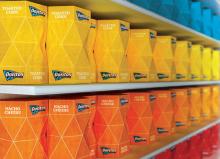Consumers need to be aware that food prices are expected to rise this summer and have already started to climb. As the NYT reports, food producers use different packaging to disguise higher prices.
The article gives the real-life example of a 33-year-old woman struggling to feed nine children; each time she cooked meals after going to the grocery store, she noticed that she wasn’t getting enough yield to feed all of her children. As soon as she noticed that something was wrong, she began inspecting the amounts in products ranging from pasta to tuna fish and found a striking similarity: most of the pre-packaged food on the aisles in the grocery store had smaller amounts in the packages.
The smaller packages often come under the guise of new and improved packaging, with some design changes that are supposed to be great improvements for the consumer. Unfortunately, the reality is that the design improvements often just result in smaller packages with less food.
It could be argued that this is a good thing because of the large portions Americans typically eat and the concerns about obesity. But if you consider the smaller packages from the point of view of a mother or father trying to feed a family, smaller amounts of food per packages means you have to buy more packages just to feed your family (which is the probable goal of the companies).
Even items like ketchup and diapers have gone up in price. As Professor Gourville, the expert interviewed by the NYT, observes: “For indulgences like ice cream, chocolate and potato chips, consumers may say ‘I don’t mind getting a little bit less because I shouldn’t be consuming so much anyway.’” That argument doesn’t hold water, however, for household necessities and staples.
What can consumers do?
Look at how much you are paying per ounce. Pay attention at the grocery store. If the amount per ounce isn’t included on the package, calculate it so you can effectively compare the prices between brands. (Often, grocery stores will have the price per ounce listed on the shelf below the item.)
Consider buying in bulk. If you are feeding a family, shop at Cost-co or other wholesale food stores to save money.
Don’t fall for the new and improved packaging. It’s usually the exact same food at higher price in a fancier package.
